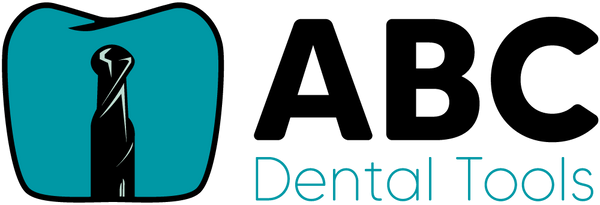The Power of CAD/CAM Dentistry: Milling Restorations and Appliances In-House
Share
The Power of CAD/CAM Dentistry: Milling Restorations and Appliances In-House
Dentistry has seen a wave of advancements in recent years, with digital tools like CAD/CAM technology taking center stage in transforming patient care. One of the biggest perks of CAD/CAM is the ability to design and mill a variety of dental restorations and appliances directly in-house, enhancing both efficiency and precision. Whether you're just exploring CAD/CAM or are already familiar, this blog will outline the various restorations and appliances you can fabricate in-office, along with the benefits they bring to your practice and your patients.
What is CAD/CAM Dentistry?
CAD/CAM stands for Computer-Aided Design and Computer-Aided Manufacturing. In the dental world, CAD/CAM technology streamlines the process of creating dental restorations, such as crowns, bridges, and veneers, allowing dentists to digitally design and mill restorations on-site. This not only improves workflow efficiency but also reduces the number of visits required for patients, making it a win-win for both dental professionals and patients alike.
Types of Restorations and Appliances You Can Mill In-House
CAD/CAM technology has come a long way, and modern milling machines can handle a variety of dental restorations and appliances. Here’s a breakdown of what’s possible:
- Crowns
- Material Options: Zirconia, ceramic, hybrid ceramics, and resin materials.
- Benefits: One of the most popular uses of CAD/CAM, crowns can now be milled chairside in a single appointment, saving patients the hassle of wearing temporaries and making repeat visits. You’ll have more control over the aesthetics and fit, leading to higher patient satisfaction.
- Veneers
- Material Options: Ceramic, composite resin, and lithium disilicate.
- Benefits: Veneers are ideal for enhancing smiles by covering discolored, chipped, or misshapen teeth. With CAD/CAM technology, custom veneers can be precisely milled, ensuring a snug fit and optimal shade matching, all while reducing turnaround time.
- Inlays and Onlays
- Material Options: Porcelain, composite resin, and gold.
- Benefits: Inlays and onlays are excellent for patients needing a more conservative approach than a crown. CAD/CAM enables the creation of these restorations with remarkable precision, and same-day procedures increase patient convenience and practice efficiency.
- Bridges
- Material Options: Zirconia, ceramic, and metal alloys.
- Benefits: While some complex cases may still require laboratory fabrication, single-unit or short-span bridges can now be milled in-house. This allows you to reduce wait times, provide custom shading, and offer highly aesthetic solutions to patients in need of tooth replacement.
- Implant Abutments
- Material Options: Titanium, zirconia, and hybrid materials.
- Benefits: Custom implant abutments can be milled for an exact fit, optimizing the implant-to-crown connection. You can design abutments tailored to the patient's anatomy and choose materials that suit the desired aesthetics and function.
- Full and Partial Dentures
- Material Options: PMMA (polymethyl methacrylate), zirconia for implant-supported bridges.
- Benefits: CAD/CAM allows for digital denture design, which improves fit and minimizes material waste. Digital files also provide a backup, making it easier to reproduce dentures if they are lost or need adjustments.
- Orthodontic Appliances and Retainers
- Material Options: Thermoplastic materials, acrylic, and clear resin.
- Benefits: With CAD/CAM technology, you can fabricate custom-fit retainers and orthodontic appliances more efficiently than traditional methods. By using digital scans and in-house milling, turnaround times are faster, and patient comfort is improved.
- Night Guards and Splints
- Material Options: Thermoplastic and hard occlusal guard materials.
- Benefits: Night guards and occlusal splints protect patients’ teeth from grinding and clenching. Milling these appliances in-house allows you to control the fit and material thickness, enhancing durability and patient comfort.
- Surgical Guides for Implants
- Material Options: Clear resin or thermoplastic materials.
- Benefits: For precise implant placement, surgical guides are invaluable. CAD/CAM enables you to mill highly accurate guides tailored to the patient’s unique anatomy, improving the predictability and success rate of implant procedures.
Why Mill In-House?
In-house CAD/CAM milling provides a host of benefits that go beyond just time savings:
- Improved Patient Experience: Offering same-day restorations means patients can complete procedures in a single visit, reducing anxiety and enhancing satisfaction.
- Increased Control Over Quality: By handling the design and milling process yourself, you maintain control over the materials and aesthetics.
- Cost Efficiency: Although the initial investment in CAD/CAM equipment can be significant, it reduces the need for external lab fees over time, providing long-term financial benefits.
- Digital Record Keeping: CAD/CAM technology allows you to keep a digital file of every restoration, which is beneficial for future adjustments, repairs, or replacements.
Final Thoughts
Investing in CAD/CAM technology for in-house milling opens up a world of possibilities for enhancing your practice. From crowns and veneers to implant abutments and surgical guides, CAD/CAM allows for same-day dentistry, customized aesthetics, and improved patient care. If you're looking to expand your practice's capabilities and improve efficiency, incorporating CAD/CAM dentistry could be a game-changer.
